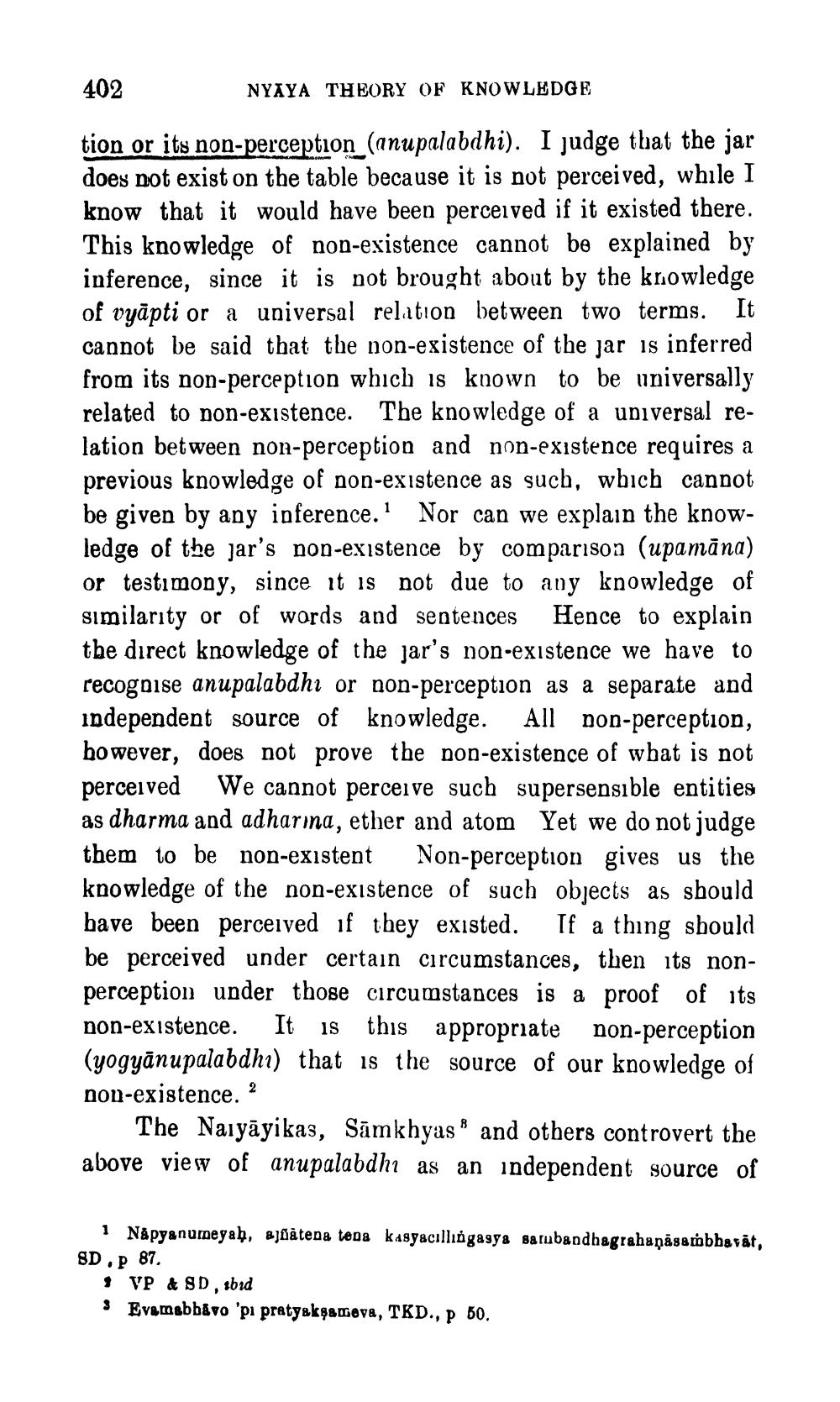________________
402
NYAYA THEORY OF KNOWLEDGE
1
tion or its non-perception (anupalabdhi). I judge that the jar does not exist on the table because it is not perceived, while I know that it would have been perceived if it existed there. This knowledge of non-existence cannot be explained by inference, since it is not brought about by the knowledge of vyapti or a universal relation between two terms. It cannot be said that the non-existence of the jar is inferred from its non-perception which is known to be universally related to non-existence. The knowledge of a universal relation between non-perception and non-existence requires a previous knowledge of non-existence as such, which cannot be given by any inference. Nor can we explain the knowledge of the jar's non-existence by comparison (upamāna) or testimony, since it is not due to any knowledge of similarity or of words and sentences Hence to explain the direct knowledge of the jar's non-existence we have to recognise anupalabdhi or non-perception as a separate and independent source of knowledge. All non-perception, however, does not prove the non-existence of what is not perceived We cannot perceive such supersensible entities as dharma and adharma, ether and atom Yet we do not judge them to be non-existent Non-perception gives us the knowledge of the non-existence of such objects as should have been perceived if they existed. If a thing should be perceived under certain circumstances, then its nonperception under those circumstances is a proof of its non-existence. It IS this appropriate non-perception (yogyānupalabdhı) that is the source of our knowledge of non-existence.
2
The Naiyayikas, Samkhyas" and others controvert the above view of anupalabdhi as an independent source of
1 Napyanumeyab, ajñatena tena kasyacıllingasya sambandhagrahaņāsambhavat, SD, p 87.
VP & SD, sbid
3 Evamabbavo 'pi pratyakṣameva, TKD., p 50.




